I’ll say it over and over again: the invitation sets the tone for the wedding and gives guests a glimpse into the style and formality of the occasion. Traditional wedding invitations, with their classic designs and formal wording, exude a timeless elegance that many couples appreciate. In this post, I’ll share some of my favorite traditional invitations from past clients and provide a customizable template to help craft your perfect invitation!
The Charm of Traditional Invitations
Traditional wedding invitations have a timeless charm, often featuring elegant paper, classic fonts, and subtle details that make them feel extra special. They follow classic etiquette, using formal wording and a structured layout to include all the important details. This thoughtful approach not only sets the tone for a meaningful celebration but also keeps cherished wedding traditions alive!
Here’s one of my favorites of all time: Mary Grace and Mitch’s invitation with rose gold foil, rose gold beveled edges, and double-thick paper:


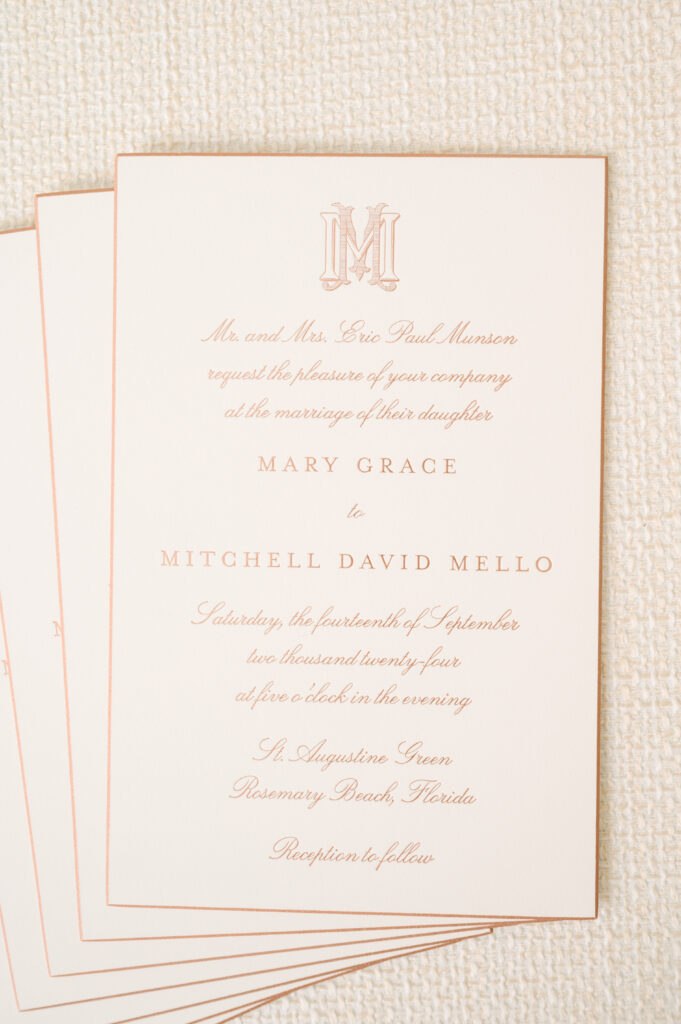
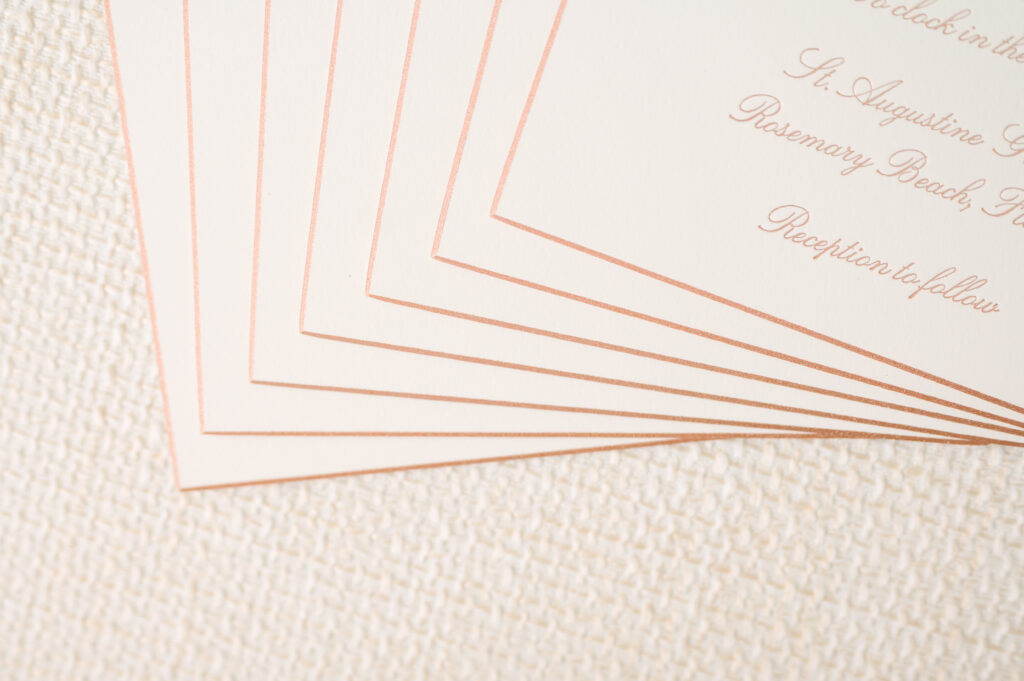

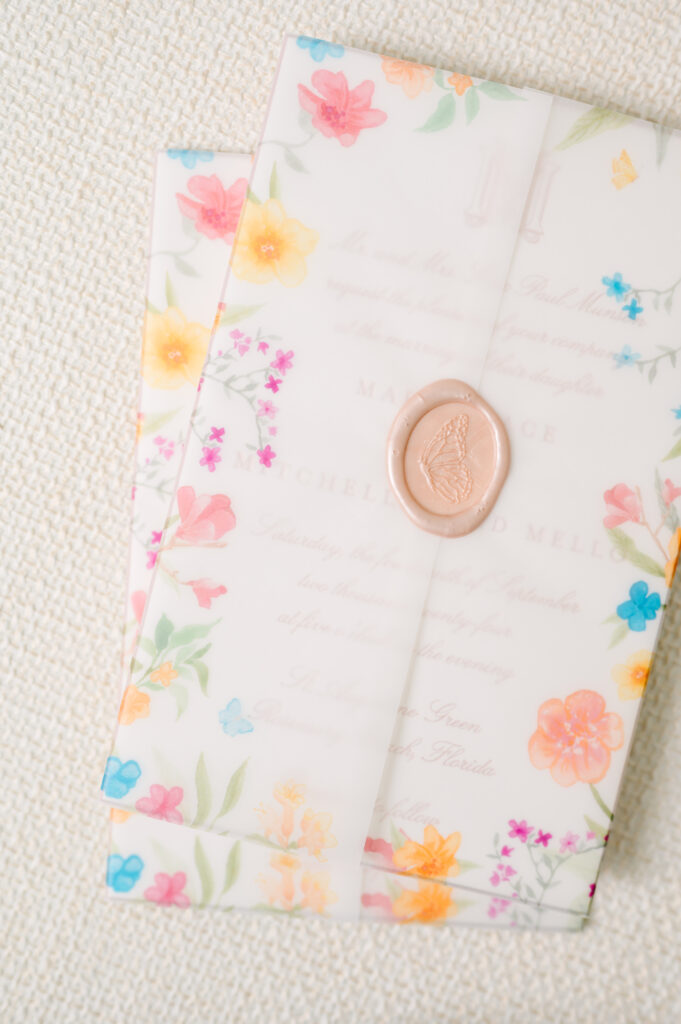
Photos by Lavender & Light Photography
Key Components of Traditional Invitation Wording
When composing a traditional wedding invitation, consider the following elements:
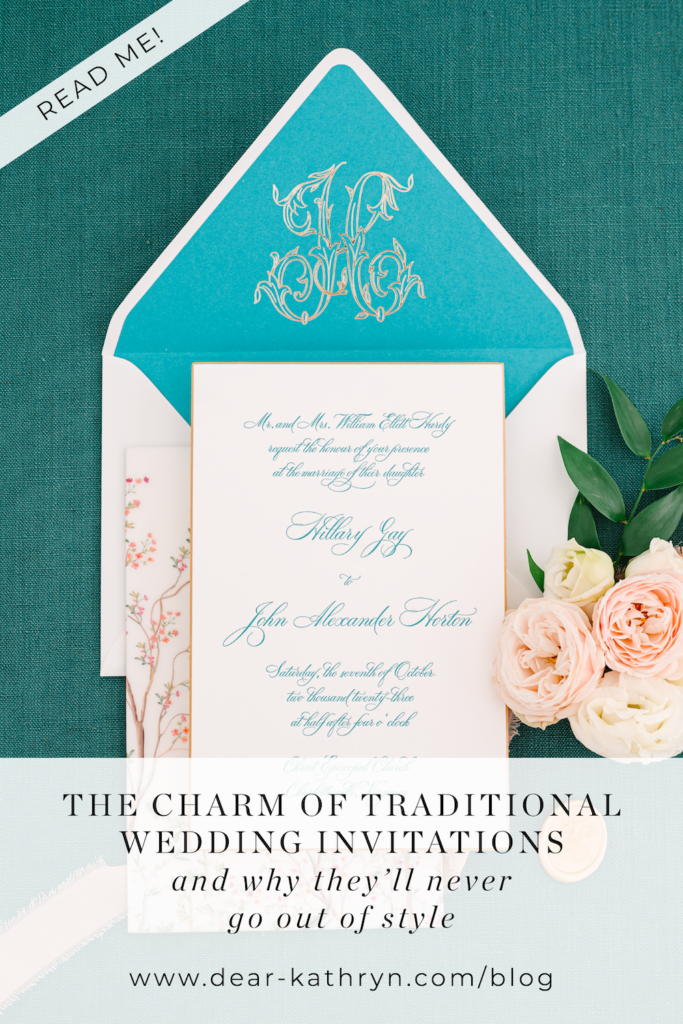
- Host Line: Indicates who is hosting the wedding. Traditionally, this would be the bride’s parents, but it can include both sets of parents or the couple themselves.
- Request Line: Extends the invitation to the guests. Phrases like “request the honor/honour of your presence” are commonly used for ceremonies held in places of worship, while “request the pleasure of your company” is suitable for other venues. Fun fact: the British spelling of “honour” is the most traditional way to word the request line!
- Couple’s Names: Traditionally, the bride’s name precedes the groom’s. If the couple is the same sex, you can list either name first, but most couples choose to do it alphabetically!
- Date and Time: We always write the date and time out in full: “Saturday, the sixteenth of May, two thousand twenty-six, at half after four o’clock in the afternoon.” You can include “in the afternoon/evening”, or leave it out!
- Venue Information: The name and location of the ceremony. Street addresses can be included, or just the city and state. We never include the zip code on the invitation card!
- Reception Details: Information about the reception, if it differs from the ceremony location. If the reception is at the same venue as the ceremony, you can simply say “Reception/celebration to follow”
- Dress Code: This is optional, but can be included to inform guests of the attire. Emily Post etiquette says that the attire will go in the bottom right hand corner of the invitation, but some couples like to have it on a separate details card. Fun fact (and this might spark some controversy): “Black Tie Optional” is not a thing. It’s either Black Tie, or it’s not! Of course, I’ll happily put anything you want on this line…but if you’re going to do black tie, DO black tie! 🤣
Customizable Traditional Invitation Template
When we’re working together, I’ll always recommend the best wording depending on your situation and the level of formality you want to portray. But I think this template will really help with understanding how your invitation will be laid out!
Mr. and Mrs. [Host’s Name]
request the honor/honour of your presence/pleasure of your company
at the marriage of their daughter
[Bridal First Name] [Bridal Middle Name]
to
[Full Groom’s Name]
on [Day of the Week], the [Day] of [Month], [Year],
at [Time] o’clock in the [Time of Day]
[Venue Name]
[City, State]
Reception to follow at [Reception Venue Name].
[Optional: Dress Code]

Personalizing Your Invitation
Let me start this section with an important note: All are welcome here at Dear Kathryn. The template above includes traditional wording for a Bride and Groom, but please know that I can customize the wording to same-sex couples. This template is just a starting point and gives you a foundation! You may want to incorporate wording that reflects your personality, or you may need to change the wording depending on who’s hosting. I’m always available for questions while we’re working together, so ask away!!
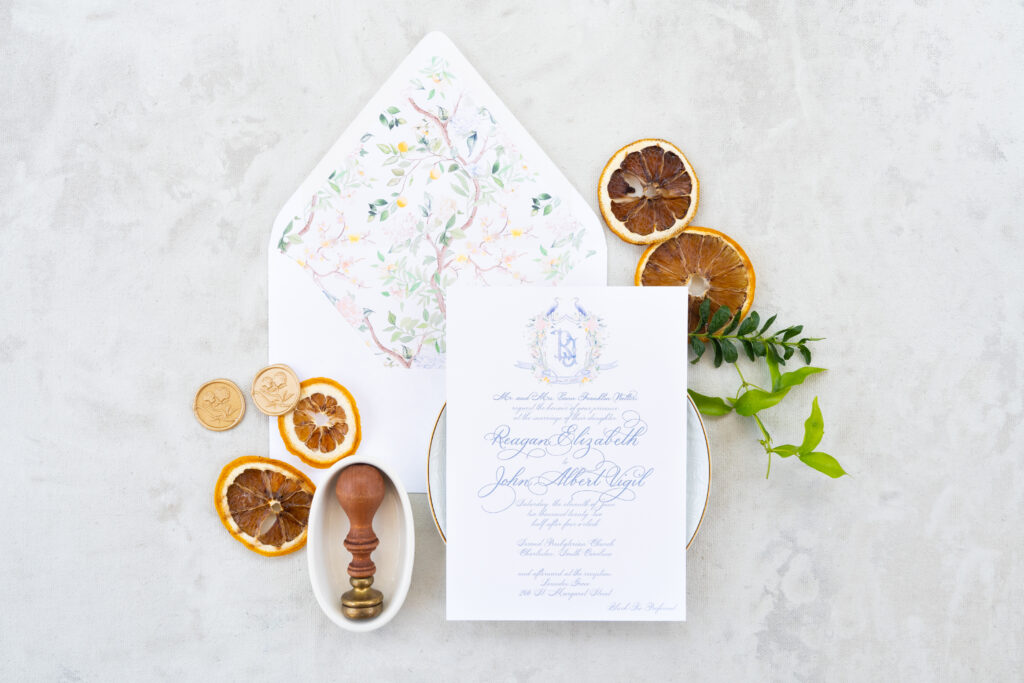
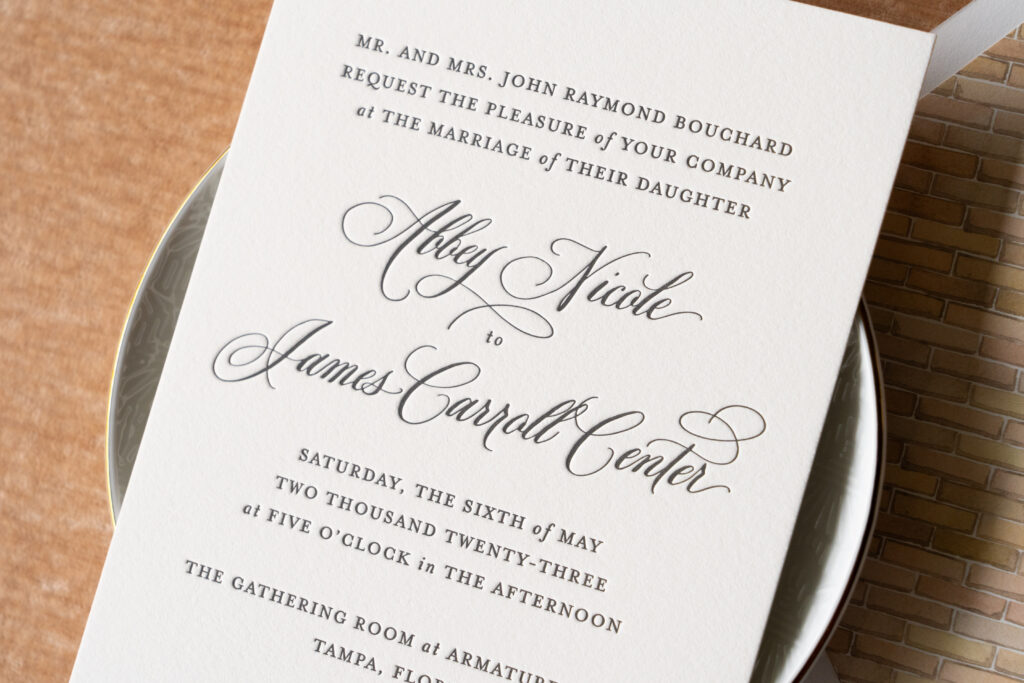
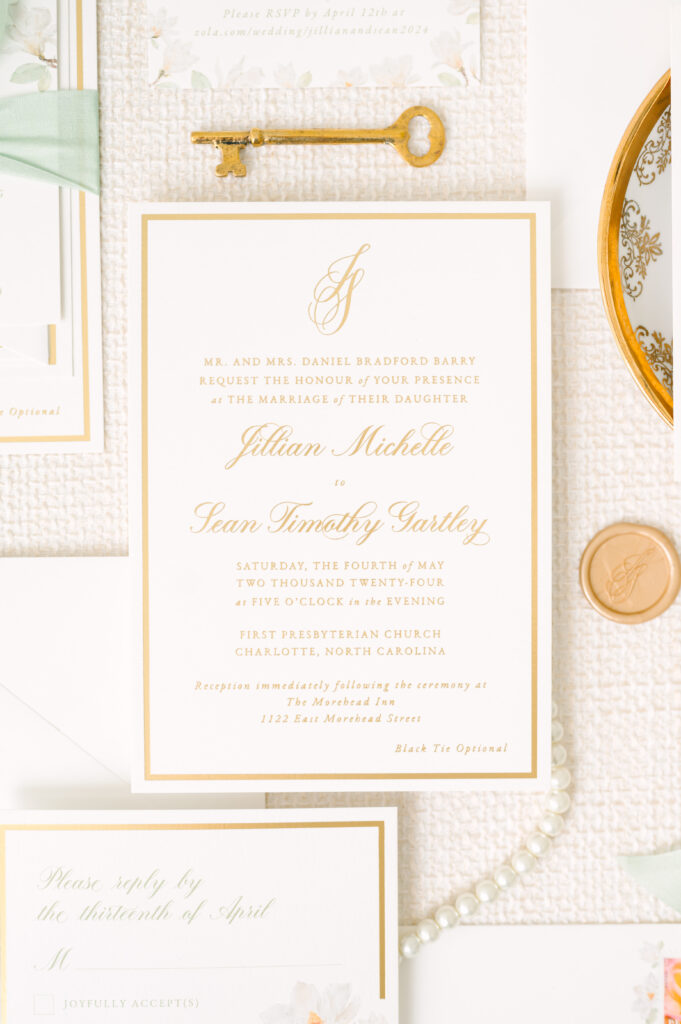
Traditional Printing Methods
Thermography, letterpress printing, and engraving will be the most formal printing methods for wedding invitations (I’m always partial to letterpress printing!). With that said, it also depends on the design of your suite! If you’re including watercolor elements on your invitation card, digital printing is the way to go for those elements! You can always mix and match printing methods, too. Mixing digital printing with letterpress, for example, is GORGEOUS! Mixing digital printing with foil is STUNNING! This is why you should go with a stationery pro: I’ll guide you with the options that are best for you!

Final Thoughts
Traditional wedding invitations have a classic charm that sets the tone for your big day. By blending traditional wording with your own personal style, you can create an invitation that feels both elegant and uniquely yours! Ready to book your dream invitations? Fill out my inquiry form and let’s get started!
SHARE POST